Mexican women who made history
Mexican women who made history: Josefa Ortiz de Domínguez, La Corregidora
Text & Translation by Monica Sauza
After a long battle that begun in 1810 and ended in 1821, history has taught us that on September 15 with his famous outcry (El Grito) Father Miguel Hidalgo proclaimed independence and freedom from the oppressing Spanish government. This proclamation is recreated every year on the night of September 15 and, though a bit different from Hidalgo’s time, when the Mexican flag is hoisted and the bell is rung, the names of the Insurgents are called aloud, and those of two women are heard: Leona Vicario and Josefa Ortiz de Dominguez. In 19th century Mexico, as well as many other countries in the world, higher social class women were not only repressed but had to be demure and modest. However, with the war they were able to become more than wives, mothers or servants ,as spies, mediators, journalists, nurses, cooks, fighters, etc., were required and many women joined in.
Today we take a peek into the life of María Josefa Crescencia Ortiz Téllez-Giron or Doña Josefa Ortiz de Dominguez, a well-known heroine of the Mexican independence.
Doña Josefa was born in the State of Michoacán to a middle class Spanish family. She became an orphan early in life and was placed in a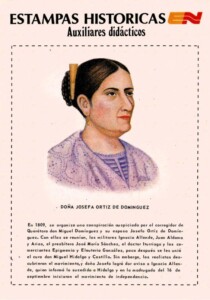 prestigious school where she met her husband – Miguel Domínguez – 12 years her senior and with whom she raised 14 children. Don Miguel was an officer (“Corregidor”) in the City of Querétaro for the viceregal government.
prestigious school where she met her husband – Miguel Domínguez – 12 years her senior and with whom she raised 14 children. Don Miguel was an officer (“Corregidor”) in the City of Querétaro for the viceregal government.
On the first decade of the 19th century the uprising to overthrow the autocratic Spanish crown in the New Spain, was formed . Besides raising her children Doña Josefa became a staunch supporter of the movement and convinced her husband to join the cause. Thus, the Domínguez couple opened the doors to their home for political meetings under the guise of literary gatherings. Then, one day, the ecclesiastical judge asked Don Miguel to intervene as there were rumors of a rebellion stirring up. Mr. Dominguez did not heed the judge’s words as he feared for his family and abandoned the cause; he then locked his wife up so she wouldn’t be able to give information to those involved in the rebellion.
La Corregidora -as she is also known- managed to send messages in codes warning the Insurgents, pushing the revolt to take place earlier than planned. Someone gave the Dominguez couple away and they were arrested. He was soon released but she was declared guilty; and even though she was pregnant, she was locked away in a convent for many years.
After the proclamation of Independence, Emperor de Iturbide offered Doña Josefa a position in his court. She declined as an empire contradicted the ideals for which she had always fought for. She was presented with many decorations and titles for her services but she refused all saying that she had done nothing more than her duty as a good patriot. “One should not reward those who serve the Country but punish those who make use of it.”
She died in 1829 at 61. Her likeness appeared in Mexican stamps and her profile in five cent coins (1942 – 1976) and in 2010 in a five peso coin commemorating the bicentenary of Mexico’s Independence.
Mexicanas que hicieron historia: Josefa Ortiz de Domínguez, La Corregidora
Texto & traducción de Monica Sauza
Después de una larga batalla que comenzó en el año 1810 y finalizó en 1821, la historia nos ha enseñado que el 15 de septiembre con su famoso Grito, el padre Miguel Hidalgo proclamó la independencia y libertad de la opresión del gobierno español. Esta proclamación se realiza todas las noches del 15 de septiembre y, aunque ahora es un tanto distinta a la época de Hidalgo, cuando la bandera mexicana es hondeada y suena la campana, en voz alta se citan los nombres de los Insurgentes, y se escuchan los de dos mujeres: Leona Vicario y Josefa Ortiz de Domínguez. En el México del siglo XIX, así como en muchos otros países en el mundo, las mujeres de la alta sociedad no sólo eran reprimidas sino que debían ser recatadas y modestas. Son embargo con la llegada de la guerra se convirtieron en algo más que esposas, madres o sirvientas pues se requerían espías, periodistas, enfermeras, cocineras, combatientes, etc. y muchas se unieron a la lucha.
Hoy echamos un vistazo a la vida de María Josefa Crescencia Ortiz Téllez-Girón o Josefa Ortiz de Domínguez, una muy reconocida heroína de la independencia mexicana.
Doña Josefa nación en el Estado de Michoacán en la cuna de una familia española de clase media. Quedó huérfana cuando aún era pequeña y la ingresaron a una prestigiosa escuela donde conoció a su futuro esposo, Miguel Domínguez, quien era 12 años mayor que ella y con quien crio a 14 hijos. Don Miguel trabajaba como funcionario (Corregidor) en la Ciudad de Querétaro para el gobierno virreinal.
En la primera década del siglo XIX se formó el levantamiento para derrocar a la autocrática corona española en la Nueva España. Además de criar a sus hijos, Doña Josefa se convirtió en una férrea partidaria del movimiento y convenció a su marido para que se uniera a la causa. Así, el matrimonio formado por los Domínguez abrió las puertas de su casa para celebrar reuniones políticas bajo la apariencia de tertulias literarias. Un día, un juez eclesiástico pidió la intervención de don Miguel pues corrían rumores de que se estaba produciendo una rebelión. El Sr. Domínguez hizo caso omiso de las palabras del juez pues temía por su familia y abandonó la causa; entonces, encerró a su mujer para que no pudiera dar información quienes estaban implicados en la rebelión.
La Corregidora, como también es conocida, consiguió enviar mensajes en código para advertir a los insurgentes, lo que impulsó que la revuelta comenzara antes de lo planeado. Alguien delató al matrimonio Domínguez y fueron detenidos. Él fue liberado en poco tiempo, pero ella fue declarada culpable; y, aunque estaba embarazada, fue encerrada durante muchos años en un convento.
Tras la proclamación de la Independencia, el emperador de Iturbide ofreció a Doña Josefa un puesto en su corte. Ella declinó puesto que un imperio contradecía los ideales por los que siempre había luchado. Le concedieron muchas condecoraciones y títulos por sus servicios, pero ella rechazó todos argumentando que no había hecho más que su deber como buena patriota. “No se debe premiar a quien sirve a la Patria, sino castigar a quien se sirve de ella” .
Falleció en 1829 a los 61 años. Su imagen apareció en timbres postales mexicanos y su perfil en monedas de cinco centavos (1942-1976), y en 2010 en una moneda de cinco pesos conmemorativa del bicentenario de la Independencia de México.
Otra fugitiva de la Ciudad de México. Mónica ha hecho de Cozumel su hogar definitivo. Desde su llegada en 1981, trabajo en turismo en todos los lugares habituales: hoteles, buceo, aeropuerto, ferries, hasta que se abrió la oportunidad de desempeñarse en su campo. Desde finales de la década de los años 70 Mónica ha estado traduciendo e interpretando, dedicándose plenamente a ello a partir de 1998, y ha asistido a extranjeros y locales de la Isla a establecer su residencia y sus negocios. Es traductora con gran experiencia, ávida historiadora y una gran fuente de tradiciones y leyendas locales.
- 2026 Mexican National Holidays - January 2, 2026
- Christmas Mexico Monica Sauza - December 18, 2025
- Animals Pets Day of the Dead - October 24, 2025
Another escapee from Mexico City, Monica has made Cozumel her definite home. Since her arrival -in 981- she worked in tourism in all the usual venues: hotels, scuba diving, airport, ferries, until the opportunity to practice in her chosen field grew. Since the latter part of the 70s Monica has been translating and interpreting, fully devoting herself to it since 1998, and has assisted foreigners and Island residents establish residence and businesses- She is a Translator with extensive experience, an avid historian and a great source of local lore and legends. Otra fugitiva de la Ciudad de México. Mónica ha hecho de Cozumel su hogar definitivo. Desde su llegada en 1981, trabajo en turismo en todos los lugares habituales: hoteles, buceo, aeropuerto, ferries, hasta que se abrió la oportunidad de desempeñarse en su campo. Desde finales de la década de los años 70 Mónica ha estado traduciendo e interpretando, dedicándose plenamente a ello a partir de 1998, y ha asistido a extranjeros y locales de la Isla a establecer su residencia y sus negocios. Es traductora con gran experiencia, ávida historiadora y una gran fuente de tradiciones y leyendas locales.
Christmas Mexico Monica Sauza
Christmas Mexico Monica Sauza Christmas in Mexico by Monica Sauza The celebration...
ByMonica SauzaSeptember 6, 2024Cozumel Malecon Melgar
How Cozumel’s Waterfront Street Got It’s Name If you’ve ever strolled Cozumel’s...
ByMonica SauzaSeptember 6, 2024October celebrations and the beginnings of the Day of the Dead
Text & Translations by Monica Sauza In Mexico, no matter where you...
ByMonica SauzaSeptember 6, 2024Mexican Sounds, Colors, Traditions Monica Sauza
Sounds, Colors, Traditions text & translation by Monica Sauza After eleven years...
ByMonica SauzaSeptember 6, 2024

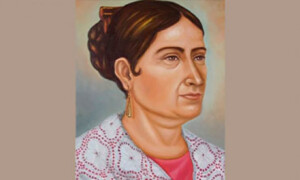
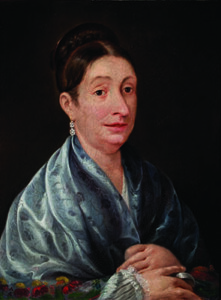
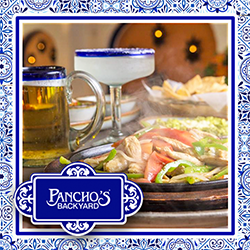




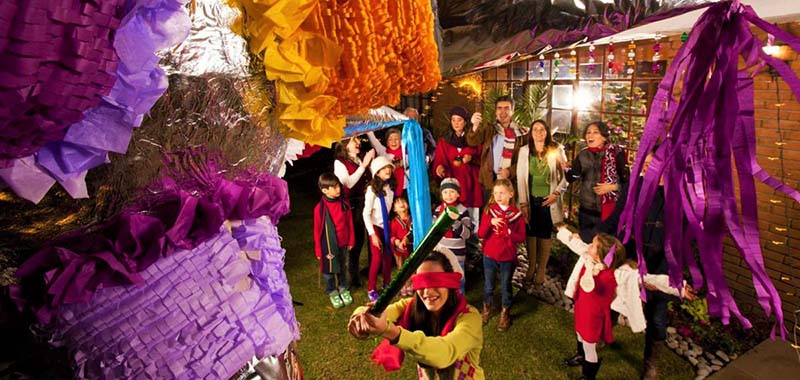
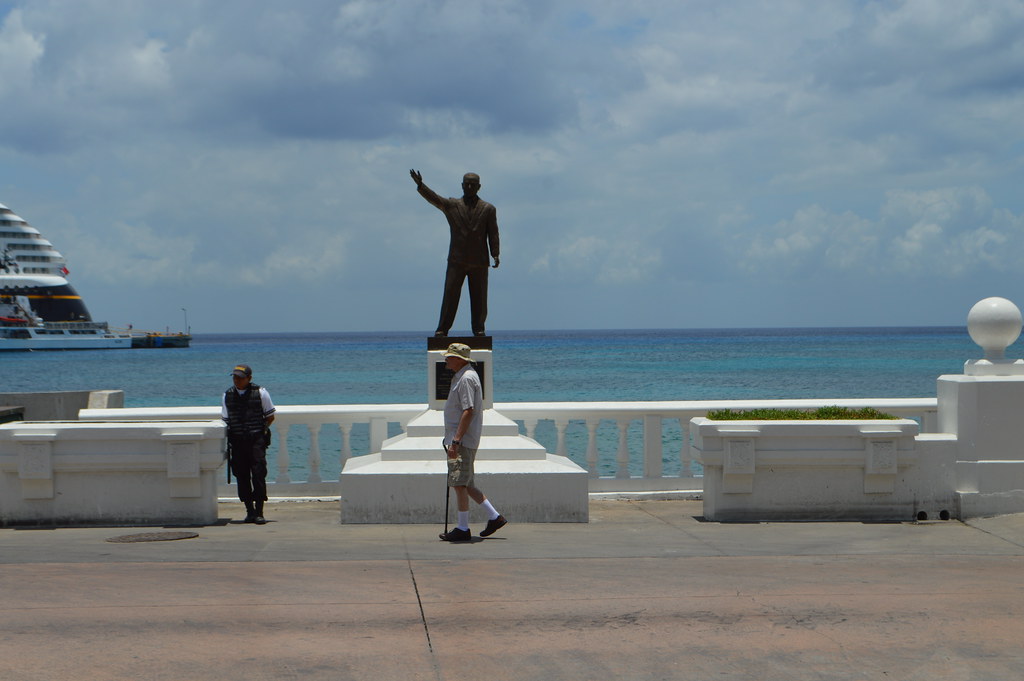









Leave a comment